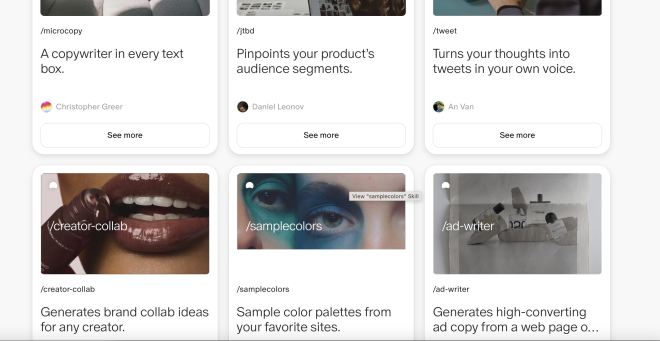When a SaaS powerhouse like Atlassian lays down a staggering US$610 million in cash to acquire The Browser Company, creators of Dia (and Arc), it’s more than a headline—it’s a bold statement. Suddenly Atlassian isn’t just optimizing how teams collaborate in apps like Jira, Confluence, Trello and Loom—it’s deciding how they get there in the first place. But is this a visionary masterstroke or an existential gamble?
This blog dives deep into both sides of that question. We'll examine Atlassian’s strategic rationale, evaluate the competitive and technical risks, and explore where this might lead the broader enterprise tech landscape.
Why This Investment Makes Sense (On Paper)
Expanding Control Over User Workflow
Atlassian recognized that 85 per cent of knowledge workers’ days live inside the browser—yet fewer than 10 percent are using secure, enterprise-ready options. Dia offers a direct way to address that gap while embedding Atlassian’s tools deeper into the workflow. Dia isn’t just browsing—it’s productivity, memory and context in one interface.
AI-Driven Relevance in the Age of SaaS
With AI models evolving quickly, browsers that are “passive bystanders” won’t cut it. Atlassian positions Dia as the AI browser for work, sized to connect fragments—email, tabs, gadgets and projects—into a cohesive workflow.
Access to Massive Enterprise Reach
Atlassian already serves 300,000 organizations, including over 80 percent of Fortune 500 companies. That's a ready-made distribution network for Dia. Combined with Atlassian’s operational scale and global reach, Dia isn’t just a browser—it’s potentially the browser for enterprise knowledge workers.
Where the Argument Gets Controversial
Was $610M Too Much for a Niche Browser?
Dia is still young. It remains in early access, and its cousin Arc has been deprioritized. Pay $610M for a browser with limited platform support and low visibility—that’s a high-risk move. Compared to giants like Chrome, Safari, and Edge, Dia starts from humility—not dominance.
Can Workers Be Persuaded to Switch?
Even if Dia can stitch together SaaS silos and chat with tabs, will knowledge workers change their default browser? The inertia is strong. Convincing IT teams to adopt a new tool—even one designed to boost productivity—is a tough sell.
Enterprise Security Is High Stakes
One of the cited reasons for the acquisition was to plug data privacy, security, and management gaps in Arc/Dia. But delivering enterprise-grade security isn’t trivial. Atlassian must now transition from SaaS front-end into a tightly-regulated infrastructure role—for which mistakes could be unforgiveable.
Timing Could Be Premature—or Too Late
Josh Miller, CEO of The Browser Company, said the AI browser winner will likely be crowned in 12 to 24 months. Do Atlassian have time to get Dia to scale before rivals—Google with AI in Chrome, Microsoft’s Edge with Copilot, Perplexity’s Comet, or even OpenAI's rumored browser—eat the market share first?
High Stakes. High Rewards. Or High Costs?
The Bull Case: A New Front-End Platform
Imagine knowledge workers being onboarded directly via Dia, synced to Jira, flicking through tasks, chats, meetings and deadlines—all in one AI-enhanced view. That’s powerful. It transforms Atlassian from a backend productivity suite to a frontend experience. It could redefine enterprise productivity like Slack did for communications.
The Bear Case: Distracted Focus and High Burn
Alternatively, Atlassian might spread resources too thin, disengage core teams from improving their flagship products, and distract themselves chasing UI flair. Dia might never achieve the scale to justify the acquisition—or become a glorified novelty we abandon quietly.
Enlargement of Enterprise Strategy
This move represents a broader strategic trend: enterprise tools are chasing user interfaces themselves—not just workflows within them. Atlassian’s acquisition of Loom last year and now The Browser Company indicate a shift from purely SaaS to UI-first platforms.
Now, we must consider how this impacts Atlassian’s revenue model. Will Dia be offered as a freemium browser? Will it feed users into Atlassian’s licensing models? Will it be sold or bundled via enterprise agreements? The monetisation path is still murky—but levers are there.
How Atlassian Can Improve Odds of Winning
- Deliver Enterprise-Grade Security: Compliance, admin controls, SSO, VPN alternatives. Make Dia IT-approved, not just flashy.
- Platform Availability & Speed: Desktop (Windows/macOS) must ship fast. Mobile is non-negotiable. It's currently Mac-only beta—dangerously narrow.
- Make Campaigns Stand Out: Tie Dia to Jira, Trello, Confluence workflows. Surface contextual use-cases to drive adoption.
- Data-Driven Stickiness: Tie AI recommendations and memory to Atlassian usage. The more a user uses Jira via Dia, the harder it is to leave.
- Stay Cross-Platform, Independent: Miller insists Dia isn’t locked into Atlassian's offerings. That independence might keep the browser appealing beyond Atlassian’s user base.
Final Assessment
The question “Will the Dia Browser Investment by Atlassian Prove to Be a Winner?” depends on whether Atlassian can move fast—productize Dia before rivals dominate the AI browser layer, scale effectively with enterprise-ready security, cross-platform support, and cultural appeal to IT and workers alike, and provide clear ROI by integrating Dia into workflows and product suites without cannibalising existing customer revenue.
If they do, this could represent one of the most forward-looking acquisitions in enterprise productivity. If they don’t, it risks being viewed internally and externally as an expensive, diverted bet that never paid up.
 images/bannerimages/Blog-Banner.jpg
images/bannerimages/Blog-Banner.jpg 


